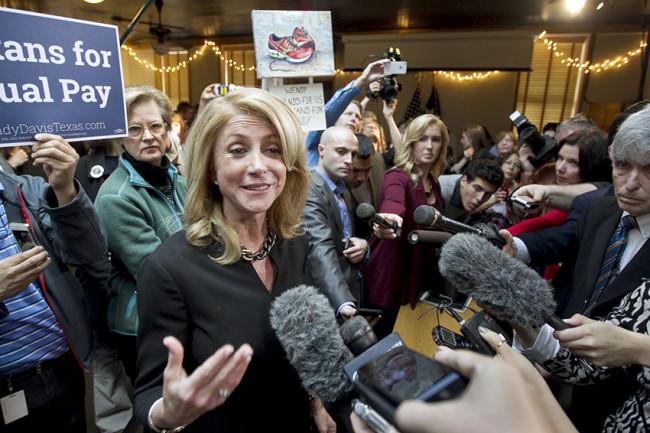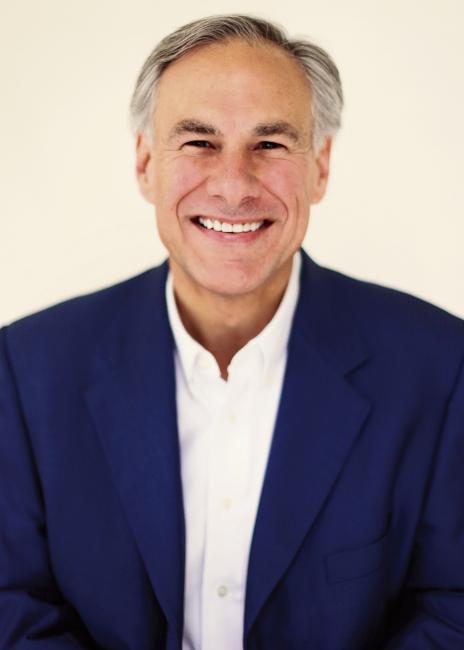Democrat Wendy Davis and Republican Greg Abbott are squaring off to create one of the tighter gubernatorial races in recent decades in Texas.
Abbott, the current Texas Attorney General, and Davis, a state senator, are debating hot button issues like education and health care.

Davis recently proposed a new education plan that would require pre-kindergarten before elementary school. Abbott wants to improve existing programs before mandating expansion. Both programs would use Texans’ tax dollars to supplement their goals.
Healthcare is another highly debated topic in the election. Davis’ claim to fame was her filibuster in pink sneakers in June 2013 aimed at protecting rights to abortion. The 11-hour ordeal put Davis’ name in national headlines and in households. Davis is fighting to expand women’s access to abortion throughout Texas. Last year, Texas legislators passed a bill that restricted abortion access by mandating abortion physicians to have admitting privileges at a nearby hospital, and harsher standards for doctors prescribing abortion-inducing drugs. Davis vows to work to overturn the previous legislation. A supporter of the Affordable Care Act (ACA), Davis believes the new federal healthcare law will expand access to care and create new jobs in the medical field.
Hailey Dunn, the president of College Republicans at SMU, cited the primary election in the Rio Grande Valley as evidence of conservatives dominating the election because of the health care issue.
“Wendy Davis’ opponent won by landslide without spending much money because the voters agreed with his pro-life values,” she said. “People who want to protect the sanctity of life don’t want to see Wendy Davis in office.”
Abbott is working to strike down the ACA. The day the measure was signed into law, Abbott, working as Texas’ Attorney General, filed a lawsuit challenging its constitutionality. He and other Texas conservatives fear the new law will be detrimental, causing out of control state budgets and an overbearing relationship with the federal government.
While Wendy Davis boasts a 12 percent higher name recognition among Texas voters, that doesn’t necessarily mean they’ll vote for her. Texas is still considered a conservative state. Texas became an “overwhelmingly” red state in the 1960s, according to SMU political science professor Cal Jillson. Originally associated with the Democratic Party from the time of Texas Independence until the mid-20th century, the Lone Star state settled into its current conservative groove in the 1960s.

Current numbers aren’t showing anything different than the political status quo. The Public Policy Polling released approval ratings on April 15 showing that Greg Abbott was leading Wendy Davis by double digits. Abbott leads over Davis by a 51 to 37 percent margin in the most recent ratings. According to Jillson, a double-digit lead by the Republican party has been the most common outcome of recent elections.
“Even if Davis loses by a six to eight point margin, it will be a huge victory for the Democratic party,” he said.
However, there’s a possibility of a shift for Texas to go from red to purple. Specific voter demographics are key over the next two decades.
“There will be an increase in the Hispanic vote over the next 10, 15, or 20 years,” said Jillson.
Hispanics comprise 40 percent of the state’s population, but only account for 20 percent of the vote. Jillson noted language and citizenship status as reasons for the low turnout, but emphasized that as naturalization occurs, the Hispanic electorate’s role in elections will be substantial. Historically, the Hispanic vote tends to be more liberal, and supports the Democratic Party.
The electorate’s characteristics are critical for the outcome of political races. According to Jillson, more than half of the electorate vote a straight party ticket. After selecting their preferences for main office positions, they vote for lesser-known candidates simply based on party identification. The Texas voters caught in the middle – the undecided – are more likely to vote Republican on a two to one scale. “The middle of the electorate can be swayed by commercials, but are still more likely to vote conservatively,” said Jillson.
White female voters are one of the key demographics being sought by the candidates.
“The female vote plays a huge role in this election,” said SMU sophomore Alex Day.
Day has been active in Texas politics, including protesting at the capitol building last summer about the women’s health care issue. She believes the female vote is important for many reasons, but also because women typically have a higher voter turnout than men.
“There’s a saying about Texas: We’re not a red state, we’re a non-voting state,” she said.
According to the Texas Secretary of State’s website, only about 58 percent of registered voters participated in the last Presidential election. The numbers were as low as 38 percent in the 2010 gubernatorial election. “It’s shameful,” said Day.
The low turnout may be contributed to a number of things, but Texas’ new voter identification law is not likely the culprit. In 2011, the Texas Legislature passed a bill that required stricter identification standards at the polls. Voters must present one of seven forms of Department of Public Safety-issued IDs, and the name on the ID must match the voter’s registered name. This poses a problem for married women who substitute their maiden name for their middle name, or who may use their married or maiden names interchangeably. However, according to SMU Political Science Professor Matthew Wilson, the effects of the law will be marginal in the upcoming election.
“Both parties are making a bigger deal out of the law than it warrants,” he said.
Wilson noted that previous research on voter identification laws pointed to them having less negative effects than people thought. He said that the research revealed less fraud than conservatives were claiming occurred, and did not show any of the depressive effects that the liberal side was claiming.
“I
don’t think it will be a factor in this election,” said Wilson.
Paige
Kerley is a junior at SMU studying journalism and minoring in law and legal
reasoning.








